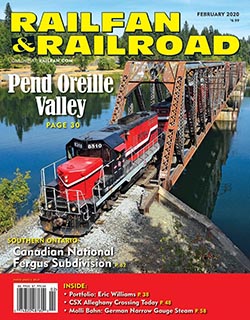 Although several companies have flirted with end-to-end mergers that would create a true American transcontinental railway, no such deals came to pass in the last century. Yet few realize the railways were briefly united under a single national company as the United States Railroad Administration from December 1917 through March 1920.
Although several companies have flirted with end-to-end mergers that would create a true American transcontinental railway, no such deals came to pass in the last century. Yet few realize the railways were briefly united under a single national company as the United States Railroad Administration from December 1917 through March 1920.
When the country entered the “Great War” in Europe in April 1917, the military found the capabilities of American railways to be abysmal. Sure, there was track everywhere, grand urban terminals, and yards galore. Yet, the control of even the main trunk lines of the system was fractured among dozens upon dozens of owners. It was not unusual for those grand stations to exist in duplicate, triplicate, or more in major cities, so that passenger service was endlessly inefficient (imagine a world where, say, every major airline had its own airport). Divisions created through competition and rivalry meant barriers to the free movement of goods. The Army and the administration of President Woodrow Wilson were in shock, imagining U.S. soldiers going without proper supplies because, say, a boxcar was delayed moving across a city due to unfriendly business histories.
The result was an executive order from Wilson, backed up by later Congressional action, that created the USRA and brought all major rail lines under direct authority of the federal government. While the phrase “good enough for government work” is an old joke in the U.S., the results were stunningly good. Urban terminals were opened to all operators, greatly improving passenger movement. Locomotives and cars were managed to meet demand rather than isolated markets. Freight car dwell times dropped rapidly.
The USRA also instituted a unified equipment production program, mandating a dozen different locomotive types, as well as several freight car designs. In all, more than 1,800 locomotives and more than 100,000 freight cars were built under the administration’s tenure. The technical innovations and the logic of standardization brought about by the USRA had a profound impact on the railways, launching a new era of high tonnage and mechanized sophistication.
It was never intended that the USRA be a permanent institution. The legislation passed by Congress stipulated that the railways be given back to the control of their owners in less than two years from the cessation of the war. Labor leaders hoped to extend that control, but there was little political support for nationalization among the public. On March 1, 1920 — not quite a hundred years ago — USRA ceased to exist.
While the old rivalries soon returned, the USRA left several persisting legacies. The technical modernizations instituted by the administration were, thanks to the postwar economic boom, extended by the private carriers, so that USRA designs continued to be built and improved upon. The cars designed in the USRA era proved that larger and better-built equipment more than paid its way in capacity increases. To some degree, we can thank the USRA for sweeping out the era of the “teakettle” engine and creating the “modern” American railway, as well as showing how knitting together disparate lines made for greater efficiencies… even if there still is no single coast-to-coast carrier.
—Consulting Editor ALEXANDER BENJAMIN CRAGHEAD is a transportation historian, photographer, artist, and author.



